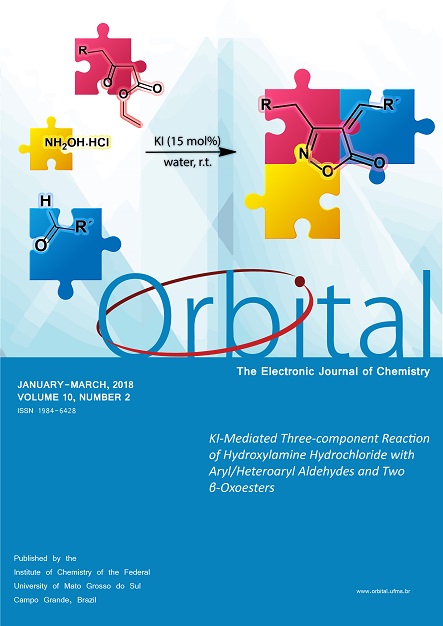Comparative Binding Analysis of Pyrimidine Derivative to BSA: Equilibrium, FTIR and Acoustical Study
- equilibrium dialysis,
- FT-IR,
- acoustical study,
- BSA,
- scatchard analysis
- thermodynamic parameters ...More
Copyright (c) 2018 Orbital: The Electronic Journal of Chemistry

This work is licensed under a Creative Commons Attribution-NonCommercial-NoDerivatives 4.0 International License.
Abstract
This paper presented the comparative binding interaction of ethyl-4-(4-hydroxyphenyl)-6-methyl-2-oxo-1,2,3,4-tetrahydropyrimidine-5-carboxylate (4-HP2OTP) and ethyl-4-(2-hydroxyphenyl)-6-methyl-2-thioxo-1,2,3,4-tetrahydropyrimidine-5-carboxylate (2-HP2STP) to bovine serum albumin (BSA) in 1,4-dioxane, DMSO and DMF by equilibrium dialysis, FT-IR and acoustical study at physiological pH. The binding data obtained was interpreted by scatchard plot, which gives the association constants. An increase in association constants is observed with increase in temperature and concentration. FT-IR study explains the binding through shifting in peak positions of amide I and II. It explained the changes in secondary structure of BSA on binding with the drugs. The free energy (∆G), enthalpy (∆H) and entropy (∆S) values were calculated by using van’t Hoff equation. The negative ∆G showed the spontaneous process and positive values of ∆H and ∆S showed endothermic interaction between ligands and BSA. ∆G becomes more negative with increased in temperature, indicated feasibility of binding interaction at high temperature. The positive values of ∆H and ∆S also showed specific electrostatic and hydrophobic interaction between ligand and BSA.


